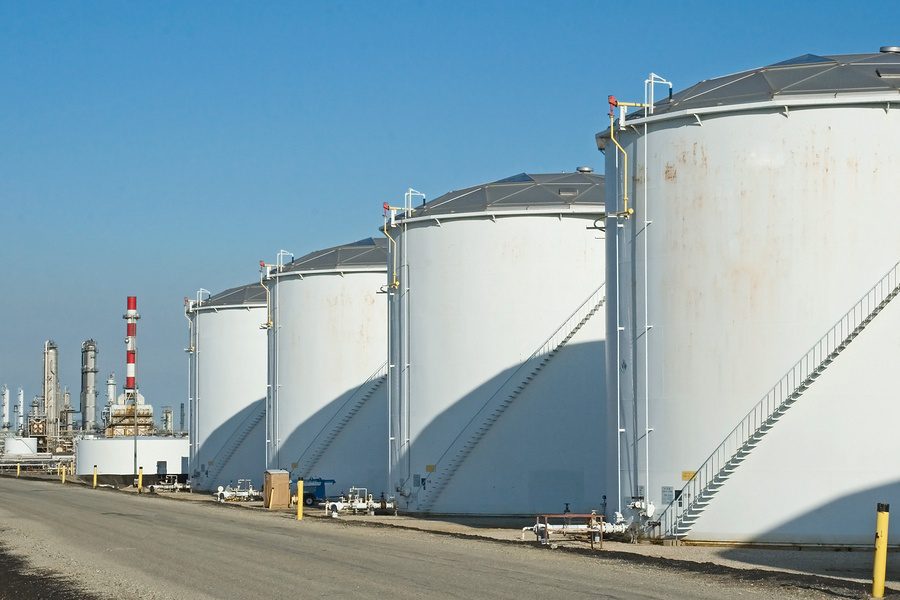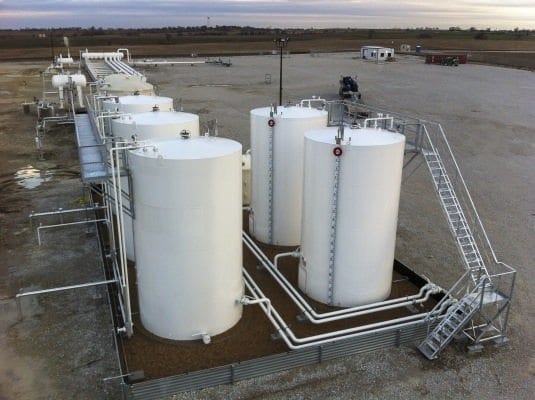Exploring API 650 Welding Inspection Standards for Reliable Tank Fabrication
Exactly How Welding Assessment Works: A Comprehensive Guide for Professionals
Welding assessment plays an essential function in making certain the safety and security and dependability of welded structures. It includes a systematic strategy that includes both aesthetic assessment and advanced screening methods. Specialists should acquaint themselves with essential criteria and policies governing the market. Comprehending the typical defects that can occur throughout welding is necessary. This overview will check out these aspects in detail, giving insights right into the procedures that support quality and integrity in welding.
Understanding the Significance of Welding Inspection
While several may take too lightly the significance of welding inspection, it plays a necessary function in ensuring the stability and safety and security of welded structures. Efficient welding evaluation recognizes possible issues and flaws that can jeopardize structural stamina and result in disastrous failures. The evaluation procedure encompasses various methods, such as visual evaluations, ultrasonic testing, and radiographic evaluations, each contributing to the general evaluation of weld quality.
In addition to guarding the structural honesty, welding inspection ensures conformity with market criteria and customer specifications. By making certain that welds meet needed tolerances and characteristics, assessments assist preserve the dependability and longevity of components in numerous applications, from building and construction to aerospace. An extensive assessment process cultivates a society of top quality and responsibility amongst makers and welders. Ultimately, welding inspection is not just a step-by-step step; it is a critical technique that underpins the security and performance of crafted systems across varied industries.
Trick Specifications and Rules in Welding Evaluation
The foundation of effective welding examination rests on adherence to developed standards and policies. Numerous organizations, such as the American Welding Culture (AWS) and the American National Criteria Institute (ANSI), stated guidelines that ensure quality and safety in welding practices. Key criteria, such as AWS D1.1 for architectural welding and ASME Section IX for pressure vessels, supply complete criteria for welding treatments, qualifications, and assessments. Regulatory frameworks, including those from the Occupational Safety And Security and Health Administration (OSHA), mandate security techniques and worker securities in welding atmospheres. Compliance with these requirements is crucial for attaining consistent weld high quality and lessening the threat of failings. Furthermore, global criteria like ISO 3834 better improve international uniformity in welding assessment techniques. Specialists must remain informed about these regulations to assure that their examination approaches straighten with market expectations and lawful needs, consequently securing both workers and architectural honesty.
First Preparation and Aesthetic Examination Techniques

Efficient welding examination begins with a comprehensive pre-inspection checklist that assures all essential problems are met prior to the real inspection happens. Following this preparation, aesthetic problem recognition plays a vital role in examining weld top quality, permitting examiners to identify issues such as splits or incorrect blend. Together, these strategies form the structure for a successful welding inspection procedure.
Pre-Inspection List
Before commencing any welding examination, an extensive pre-inspection list is vital to guarantee that all needed preparations are completed which visual inspection methods are successfully employed. Key aspects of this list include validating the welding procedure requirements (WPS), making certain all tools is calibrated and in excellent working problem, and validating that the inspector possesses the needed accreditations. In addition, it is essential to review any type of previous assessment records and to evaluate the workplace for safety and security dangers. The assessor should also validate that all relevant documentation, such as material certifications and examination documents, is conveniently available. Finishing this list assists to establish a solid foundation for a successful assessment process, improving the dependability of the outcomes acquired.
Aesthetic Issue Identification
A successful aesthetic flaw identification process starts with mindful preliminary preparation and the application of well-known aesthetic evaluation techniques. Assessors ought to assure that the welding area is well-lit and clean, as ample visibility is important for discovering defects. A thorough assessment of the weld joint's surface permits for the identification of discontinuities, such as splits, undercuts, or porosity. Assessors typically make use of devices like magnifying glasses or mirrors to boost their view of hard-to-reach locations. Additionally, they must be familiar with the particular welding continue reading this requirements and standards appropriate to the task. By sticking to these techniques, assessors can efficiently recognize possible issues, guarding the integrity of the weld and conformity with sector standards.
Non-Destructive Screening Approaches: A Review
Non-destructive testing (NDT) approaches play an important function in the welding assessment process by guaranteeing the honesty and reliability of bonded structures without triggering any kind of damage (API 650 Welding Inspection). These strategies allow examiners to examine the high quality of welds while maintaining the elements being examined. Usual NDT approaches consist of ultrasonic testing, radiographic screening, magnetic particle testing, and dye penetrant testing, each offering distinct advantages
Ultrasonic testing uses high-frequency sound waves to find inner imperfections, while radiographic screening utilizes X-rays or gamma rays to imagine the interior structure of welds. Magnetic bit testing discloses surface area and near-surface flaws by using a magnetic area and iron fragments to the weld location. Color penetrant screening highlights surface-breaking defects with the application of a tinted color. With each other, these NDT techniques supply vital understandings into weld top quality, making it possible for specialists to make informed decisions relating to security and conformity in welding applications.
Usual Issues and Their Effects
Identifying common flaws in bonded joints is necessary for keeping architectural integrity and safety. Different flaws can develop throughout the welding process, each bring prospective implications for the total efficiency of the framework. Porosity, characterized by small gas pockets within the weld, can weaken the joint and compromise its load-bearing capability. Splits might develop because of thermal stress or incorrect air conditioning, resulting in prospective failing under stress and anxiety. Insufficient fusion occurs when the weld metal does not completely bond with the base product, leading to weak joints that might not withstand designated loads. Damaging, where the base steel is eroded, can additionally reduce the reliable cross-section of the weld. Additionally, excessive reinforcement can produce anxiety concentrations that might result in failing. Identifying these defects quickly permits for restorative procedures, ensuring the durability and integrity of welded frameworks in essential applications.
Tools and Tools Made Use Of in Welding Assessment
Efficient welding evaluation relies upon a range of specialized devices and tools to guarantee the quality and stability of welded joints. Necessary instruments consist of visual examination tools, such as magnifying borescopes and glasses, which enable assessors to closely analyze welds for surface area problems. Non-destructive testing (NDT) techniques, such as ultrasonic testing, radiographic screening, and magnetic particle testing, are essential for recognizing internal defects without damaging the product.
Dimension devices, consisting of calipers and weld assesses, aid evaluate dimensions and determine conformity with requirements. In addition, hardness testers evaluate the mechanical residential properties of welded joints. Individual safety devices (PPE) is likewise necessary, safeguarding the safety and security of assessors while operating in potentially hazardous environments (API 650 Welding Inspection). Each device offers a particular objective, jointly improving the effectiveness of pop over here welding examination and adding to the dependability of completed tasks
Frequently Asked Concerns
What Qualifications Are Needed to Come To Be a Welding Assessor?
To come to be a welding examiner, individuals normally require relevant certifications, such as AWS CWI or CSWIP, in addition to experience in welding processes, engineering principles, and knowledge of evaluation techniques, safety and security criteria, and suitable codes.
Exactly How Typically Should Welding Inspections Be Conducted?
Welding inspections need to be performed on a regular basis, ideally at numerous job stages, consisting of pre-weld, during-weld, and post-weld. Frequency might likewise depend upon sector standards, task specifications, and the complexity of the welds included.
Can Welding Defects Be Repaired After Inspection?

Yes, welding flaws can typically be fixed after evaluation. Relying on the intensity and sort of problem, suitable methods such as remodeling or added welding might be used to restore architectural integrity and security conformity.
What Industries Require Normal Welding Inspections?

Various sectors, consisting of construction, manufacturing, aerospace, and automobile, call for normal welding inspections - API 650 Welding Inspection. These inspections guarantee adherence to safety requirements and quality assurance, minimizing dangers linked with architectural stability and functional efficiency in bonded elements
How Do I Choose a Welding Examination Solution?
To pick a welding assessment service, one ought to consider qualifications, experience, certifications, and sector credibility. Furthermore, assessing consumer testimonials and assuring the service meets pertinent criteria can assist guarantee quality examinations and reliable outcomes.

While many might ignore the significance of welding assessment, it plays an important duty in making sure the integrity and security of bonded structures. Trick requirements, such as AWS D1.1 for structural welding and ASME Section IX for stress vessels, offer thorough criteria for welding treatments, credentials, and evaluations. Efficient welding evaluation starts with a detailed pre-inspection checklist that assures all needed conditions are satisfied before the real inspection takes location. Before starting any type of welding inspection, a detailed pre-inspection checklist is necessary to guarantee that all required prep work are completed and that visual look what i found assessment strategies are properly used. Non-destructive testing (NDT) methods play a necessary role in the welding assessment process by ensuring the integrity and reliability of bonded structures without triggering any kind of damages.